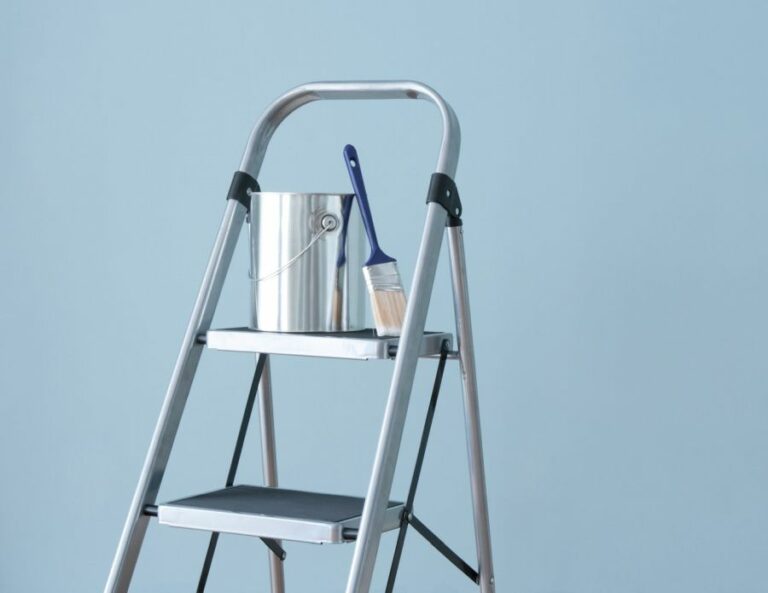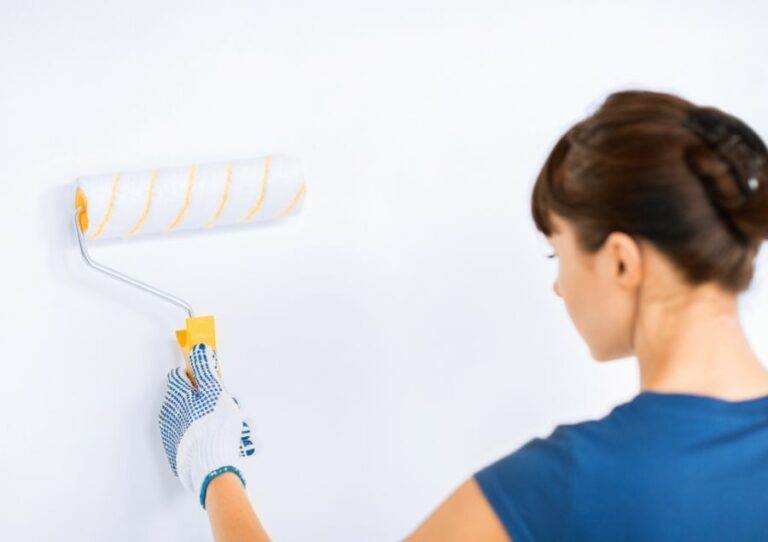Fabric Paint For Outdoor Cushions, 25 Things You Should Know
Outdoor living spaces call for comfortable and stylish cushions, but fabric paint is an excellent choice if you want to revamp their look! With my guidance, you can achieve stunning results and transform your cushions into unique, eye-catching pieces. So, let’s explore the world of fabric paint further and learn how to create fabulous outdoor cushions that are as durable as they are beautiful!
Fabric paint for outdoor cushions:
Fabric paint for outdoor cushions should be chosen based on factors such as fabric material, UV resistance, water resistance, and colorfastness. Acrylic fabric paints and enamel fabric paints are suitable for outdoor cushions due to their durability, color variety, and weather-resistant properties. Applying fabric paint using spray application or brush application techniques achieves the best results. Proper care and maintenance help keep painted cushions vibrant and long-lasting.

Discover the magic of fabric paint to transform your outdoor cushions into vibrant, stylish pieces that can withstand the elements! Keep reading to explore tips, techniques, and amazing ideas to refresh your outdoor living space like never before. Don’t miss it!
Contents
- 1 Outdoor Cushion Fabric Paint for Enhanced Durability
- 2 Is it Possible to Utilize Fabric Paint on Outdoor Cushions?
- 3 What Type of Paint is Suitable for Outdoor Fabric Applications?
- 4 Is Outdoor Fabric Paint Resistant to Water?
- 5 What is the process for painting outdoor seat cushions?
Outdoor Cushion Fabric Paint for Enhanced Durability
Outdoor cushions add comfort and style to your patio or backyard, but they need to withstand the elements like sun, rain, and wind. Choosing the right fabric paint to refresh or customize your outdoor cushions is crucial to ensure that they maintain their colors and quality.
• Types of Fabric Paints Suitable for Outdoor Cushions
– Acrylic Fabric Paints
Acrylic fabric paint is a popular choice for outdoor cushions as it offers excellent UV resistance, longevity, and colorfastness. It dries quickly, is water-resistant, and has a low odor. Acrylic fabric paints are available in a wide variety of colors, so you can customize your cushions to match your outdoor decor.
– Enamel Fabric Paints
Enamel fabric paint offers a glossy and durable finish, perfect for outdoor cushions. It is known for its excellent weather-resistant properties and adhesion to fabrics, resisting chipping and peeling.
Enamel fabric paint may take longer to dry than acrylic paint, but it is worth the wait for impressive and long-lasting results.
• Things to Consider When Choosing Outdoor Fabric Paint
– Fabric Material
The type of fabric of your outdoor cushion is an essential consideration when selecting fabric paint. Some paints may not adhere well to particular materials, resulting in poor coverage and durability.
It is always a good idea to check the paint manufacturer’s recommendations to ensure that the paint is compatible with your cushion fabric.
– UV Resistance
Outdoor cushions are exposed to sunlight for extended periods, which can lead to fading and degradation of fabric colors. Ensure that the fabric paint you choose offers built-in UV protection to maintain the vibrancy of your outdoor cushions.
– Water Resistance
Since outdoor cushions are exposed to the elements, it is essential to select fabric paint that is waterproof or water-resistant. This ensures that your cushions will not suffer from water damage, mildew, or premature fading.
– Colorfastness
Colorfastness refers to a fabric paint’s ability to maintain its color over time, despite exposure to sunlight, water, and other factors. It is crucial to choose fabric paint with high colorfastness to ensure that your outdoor cushions maintain their color and finish for a long time.
• Application Techniques for Fabric Paint on Outdoor Cushions
– Spray Application
Fabric spray paint is an excellent option for outdoor cushions, as it provides an even, thin coat of paint that dries quickly and adheres well to the fabric. The spray application allows for easy touch-ups and customization, creating unique and personalized outdoor cushions.
To use fabric spray paint, ensure the outdoor cushions are clean and free of any debris, and protect the surrounding areas from overspray. Apply the paint in thin, even coats, allowing each coat to dry before applying the next. Ensure the final coat is dry before using the cushions.
– Brush Application
If you prefer a hands-on approach or need more control over the application, use a brush to apply fabric paint to your outdoor cushions. Select a soft-bristle brush suited for painting fabric, and use a paint palette to avoid any contamination or color inconsistencies.
Apply the paint in thin, even strokes and allow each layer to dry before applying the next coat. As with the spray application, ensure the final coat is thoroughly dry before using the cushions.
– Painting Techniques
Aside from applying solid colors, you can create patterns, designs, or decorative elements on your outdoor cushions using fabric paint. Some popular techniques include:
- Stenciling: This technique uses pre-designed stencils as templates to apply the paint, creating elaborate patterns or designs without the need for artistic skills.
- Stamping: Use pre-made stamps or carve your stamps using a sponge or foam. Apply paint to the stamp and press it onto the cushion to create prints and repetitive patterns.
- Freehand painting: If you possess artistic talent, freehand painting allows you to create unique and personalized designs on your outdoor cushions.
• Caring for Painted Outdoor Cushions
To maintain the vibrant colors and durability of your painted outdoor cushions, follow these care tips:
- Protect cushions from excessive sun exposure, either by storing them in a shaded area when not in use or utilizing UV-resistant covers.
- Remove debris, dirt, or spills promptly to avoid stains or damage.
- Clean cushions using a mild detergent mixed with water and a soft brush, avoiding harsh cleaners that could damage the paint or fabric.
- Check the manufacturer’s recommendations for other specific care tips for your chosen fabric paint brand.
In conclusion, fabric paint provides a cost-effective and creative means to revitalize, customize, and protect your outdoor cushions. The key is selecting the right type of paint and proper application techniques to achieve a stunning and long-lasting result.
Is it Possible to Utilize Fabric Paint on Outdoor Cushions?
Outdoor cushions are a stylish and comfortable addition to any patio, porch, or garden area. They provide a cozy place to enjoy lounging and socializing outdoors. Over time, however, your outdoor cushions may begin to look worn or faded due to exposure to the elements.
In this case, you might be wondering if it’s possible to use fabric paint to give them a new lease on life. The short answer is yes, fabric paint can be used on outdoor cushions, but there are some important factors to consider before diving into this project.
• Choosing the Right Fabric Paint
When selecting fabric paint for your outdoor cushions, it’s important to choose a paint specifically designed for use on fabrics and resistant to outdoor conditions. These paints are specially formulated to provide a flexible, durable, and water-resistant finish that will stand up to the indoors and outdoors.
There are numerous brands and types of fabric paint available on the market. Some popular options include:
- Acrylic fabric paint: This type of paint is water-based and easy to work with. You can find acrylic fabric paint in a variety of finishes, from matte to glossy. It’s important to choose an acrylic paint that is specifically labeled for outdoor use or is weather-resistant. For outdoor cushions, you’ll want to look for a paint that provides UV protection to prevent fading, as well as one that is resistant to mildew and moisture damage.
- Spray fabric paint: Spray fabric paint can be applied more quickly and evenly than brush-on paints, making it a popular choice for covering large areas. Like acrylic fabric paint, it’s important to choose a spray paint that is specifically designed for outdoor use.
The U.S. Department of Agriculture suggests using latex paint, vinyl paint, or silicone paint to protect the fabric and other materials exposed to outdoor conditions. These types of paint offer a range of waterproof, mildew-resistant, and UV-resistant properties.
• Preparing Your Outdoor Cushions
Before you begin painting your outdoor cushions, it’s important to properly clean and prepare them to ensure the best possible results. Follow these steps to prepare your cushions for painting:
- Remove the cushions from their covers if possible. If your cushion covers are not removable, you can still paint them, but take extra care to protect the surrounding areas.
- Wash the cushion covers using a gentle detergent, and rinse thoroughly. Ensure that the fabric is completely dry before proceeding.
- Iron or steam the cushion covers to remove any wrinkles or creases.
- Place the cushion covers on a clean, flat surface covered with a drop cloth or plastic sheeting to protect the area from paint.
- If your cushion covers are made from a synthetic material, it’s a good idea to apply a fabric primer before painting. This will help the paint adhere better and improve the durability of the finish.
• Painting Techniques for Outdoor Cushions
There are several different methods you can use to apply fabric paint to your outdoor cushions. Some popular techniques include:
- Hand painting: You can use a brush or sponge to apply the paint directly to the cushion fabric. This method allows for a great deal of control and precision, making it ideal for detailed designs and patterns.
- Stenciling: Create or purchase a stencil, and use a brush or sponge to apply paint through the stencil, creating a crisp, clean design on your cushion fabric.
- Stamping: Find a foam or rubber stamp with a design you like, or create your own using craft foam. Apply paint to the stamp, and press it firmly onto the cushion fabric. Reapply paint as needed, and continue stamping until the desired design is achieved.
- Spray painting: If you’ve chosen spray fabric paint, apply the paint in even, sweeping motions, keeping the can approximately 12 inches away from the surface of the cushion.
Whichever method you choose, be sure to follow the paint manufacturer’s instructions for application, drying times, and any necessary sealing to ensure the best possible results.
• Caring for Your Painted Outdoor Cushions
Once you have painted your outdoor cushions, it’s important to properly care for them to maintain the durability and vibrancy of the paint. Follow these tips to care for your painted cushions:
- Bring your cushions indoors or cover them during periods of heavy rain, extreme heat, or extended periods when they are not in use.
- Clean your painted cushions using a damp cloth or sponge with mild soap and water. Avoid using abrasive cleaners or scrubbing too hard, as this may remove or damage the paint.
- If you notice any paint chipping or peeling, touch up the affected areas with additional paint as needed.
In conclusion, it’s entirely possible to use fabric paint on outdoor cushions to refresh and rejuvenate their appearance.
By choosing the right type of paint, properly preparing the cushions, and applying the paint using the appropriate techniques, you can create a beautiful, durable, and weather-resistant finish for your cushions.
Don’t forget to care for your newly painted cushions properly to ensure they continue to look great and last for seasons to come.
What Type of Paint is Suitable for Outdoor Fabric Applications?
As a fabric painting enthusiast, I know an important aspect to consider for a successful project is choosing the right paint, especially when it comes to outdoor fabrics. Outdoor fabric paint should be durable, weather-resistant, and color-fast to keep your projects looking their best.
• Acrylic Fabric Paints: A Popular Choice
One of the most popular paints for outdoor fabric is acrylic paint. Acrylic fabric paints are water-based, which makes them easy to work with and clean up. They are also quite versatile and adhere well to a variety of fabric types, including canvas, polyester, and cotton.
– Pros
- Easy to work with and clean up
- Versatile and adheres to various fabric types
- Wide range of colors
- Quick drying time
– Cons
- Some may be less weather resistant than other options
Recommendation: Personally, I have had great success using acrylic fabric paints for outdoor projects. Brands like Liquitex and DecoArt offer high-quality acrylic paints specifically designed for fabrics, ensuring weather resistance and color fastness.
When working with acrylic paints, be sure to follow the manufacturer’s instructions for the best results.
• Outdoor Fabric Spray Paints: Convenience and Coverage
Spray paints designed specifically for outdoor fabrics offer convenient application and consistent coverage. These types of paint come in a variety of colors and finishes, making it simple for you to achieve your desired look.
– Pros
- Convenient application
- Consistent and even coverage
- Suitable for larger projects and hard-to-reach areas
- Wide range of colors and finishes
– Cons
- Can be more expensive than other options
- May require additional ventilation during application
Recommendation: Spray paints like Rust-Oleum and Krylon’s fabric-specific lines have worked well for my outdoor fabric projects, especially when covering large areas or working with uneven surfaces.
When using spray paints, it’s important to work in a well-ventilated area and take proper safety precautions while applying.
• Fabric Dye: A Unique Alternative
If you’re seeking a more even color coverage or looking to dye your fabric a completely different color, fabric dye may be the right option for your outdoor project. Keep in mind that the results may vary depending on the type of fabric and dye you’re using.
– Pros
- Allows for even color coverage
- Can achieve a completely different color
- Suitable for natural and synthetic fabrics
– Cons
- May have limitations on fabric type and color intensity
- Requires additional steps and materials to prepare the fabric
Recommendation: As a different approach, I have successfully used fabric dyes like those from Rit and Jacquard for outdoor fabric projects. Ensure that the fabric dye you choose is specifically made for outdoor use or includes a UV-resistant component.
Follow the manufacturer’s instructions for the correct fabric preparation, dye application, and rinsing for the best results.
• Tips for Successful Outdoor Fabric Painting
Regardless of the type of paint or dye you choose for your outdoor fabric project, following these tips will help ensure the best results:
- Clean your fabric: Thoroughly clean your fabric before applying paint or dye, as dirt and grime can affect the paint’s adhesion and overall finish.
- Prep your work area: To avoid messes and accidents, set up a clean and protected work area with drop cloths to catch any spills or overspray.
- Test first: Always perform a patch test on a small section of the fabric or a scrap piece to ensure the paint or dye works well with your chosen material.
- Follow the recommended drying time: Allow your painted or dyed fabric to dry for the recommended amount of time specified by the manufacturer before handling or exposing it to the elements.
- Protect your work: To increase the life of your outdoor fabric project, consider applying a protective sealant or UV-resistant spray designed for fabrics like those from 303 Products.
In conclusion, the key to a successful outdoor fabric painting project is choosing the right paint or dye based on your fabric type and desired look.
Acrylic fabric paints, outdoor fabric spray paints, and fabric dyes each offer their unique advantages, and careful consideration of your project goals will guide you to the best choice.
Follow the recommended guidelines for preparation, application, and care to ensure your outdoor fabric projects stand the test of time.
Paint Type | Description | Advantages |
|---|---|---|
Acrylic Fabric Paint | Water-based paint specifically designed for fabric use | Permanent, flexible, vibrant colors; easy to apply; quick drying; mixable |
Spray-On Fabric Paint | Aerosol fabric paint applied evenly on the fabric surface | Even coverage, easy to use, suitable for large surfaces, saves time |
Screen Printing Ink | Ink applied to fabric through a mesh screen stencil | Professional look, precise detailing, durable, can create repetitive patterns |
Fabric Markers | Markers containing paint or ink specifically formulated for fabric use | Portable, easy to use, suitable for small designs, no additional tools required |
Is Outdoor Fabric Paint Resistant to Water?
Outdoor fabric paint has become an increasingly popular solution for renewing and transforming various outdoor items, especially those made of fabric. It’s the go-to option for adding a personal touch or giving new life to patio furniture, umbrellas, awnings, and even clothing.
A key attribute of outdoor fabric paint is its ability to withstand various weather conditions, making it highly suitable for exterior applications. But, the one question many people find themselves asking is: “Is outdoor fabric paint waterproof?”
• How Waterproof is Outdoor Fabric Paint?
The short answer to whether outdoor fabric paint is waterproof is a resounding “yes.” However, it’s essential to understand that not all fabric paints are equal in their waterproof capabilities.
Some paints are designed specifically as waterproof solutions that create a protective layer upon drying, ensuring the fabric remains unscathed by water exposure. On the other hand, some fabric paints may be more water-resistant than fully waterproof.
– Waterproof vs. Water-Resistant Fabric Paint
There is a significant difference between waterproof and water-resistant fabric paints, and understanding this distinction is crucial when choosing the right paint for your project.
- Waterproof Fabric Paint: This type of paint provides complete protection against water, meaning that it doesn’t allow any water to penetrate through its surface. With waterproof fabric paint, you can expect the fabric to remain dry even after prolonged exposure to water.
- Water-Resistant Fabric Paint: This type of paint can withstand light water exposure but may not be able to protect the fabric entirely from more significant amounts of water. It repels water to some extent but might not hold up under heavy rain or water submersion.
It’s essential to choose the right type of paint based on your specific needs and the intended use of the painted fabric. For instance, if you need to paint an umbrella or patio furniture that will be exposed to rain frequently, opting for waterproof fabric paint is the best choice.
• Factors Affecting the Waterproof Capability of Fabric Paint
While outdoor fabric paint is designed to be waterproof, several factors can affect its ability to repel water effectively. Here are some crucial aspects to consider to ensure your outdoor fabric paint remains waterproof:
– Proper Preparation and Application
The way you prepare your fabric and apply the paint plays a significant role in determining the paint’s effectiveness. For best results, follow these steps:
- Clean: Ensure the fabric being painted is thoroughly cleaned and free from dirt, dust, or grease. This helps the paint to adhere better to the fabric, making it more durable.
- Prime: Using a fabric primer before applying the paint can improve the paint’s adhesion and subsequently increase its waterproof capabilities.
- Application: Apply the paint evenly and consistently, using the recommended number of coats for better protection against water penetration.
- Drying Time: Allow the paint to dry for the suggested amount of time, which may vary between different brands and products. Skipping this step or cutting it short may result in decreased waterproofing effectiveness.
– Quality of the Paint
Choosing high-quality paint designed specifically for outdoor fabric applications is crucial in ensuring that it offers the desired level of protection against water. A low-grade or poorly formulated paint may not provide the waterproofing capabilities you require.
It’s always recommended to research and select a reputable brand and product for the best results.
– Maintenance and Wear and Tear
Regular wear and tear and exposure to various weather elements can impact the waterproof effectiveness of the outdoor fabric paint. Proper maintenance of the painted fabric can prolong the paint’s waterproof properties.
Additionally, it’s essential to consider the type of fabric and its overall quality, as it can influence how long the paint remains effective.
• Final Thoughts
Outdoor fabric paint is indeed waterproof, but it’s essential to choose the right type of paint and follow proper application and maintenance procedures.
By considering factors like paint quality, application, and maintenance, you can ensure that your painted fabrics are well-protected against water penetration, keeping them in the best condition possible.
What is the process for painting outdoor seat cushions?
Outdoor furniture is not only functional but can also add style and personality to your outdoor spaces. However, over time, the colors of outdoor seat cushions can fade and lose their vibrancy.
Painting your outdoor seat cushions is an effective and affordable way to revitalize them and give them a new lease on life, ensuring your outdoor space looks fresh and inviting.
To make the process smooth and successful, follow these steps to paint your outdoor seat cushions.
• Selecting the Right Paint
The first step in painting outdoor seat cushions is to choose the correct type of paint. For this purpose, it’s crucial to select a paint that’s specifically designed for outdoor fabric use, such as acrylic fabric paint or spray paint for outdoor fabric.
This paint type is waterproof, fade-resistant, and ensures a long-lasting finish on your cushions. You can easily find these paints at your local hardware or craft store.
Additionally, make sure to choose a color that complements or matches your existing outdoor furniture and the overall decor of your outdoor space. If uncertain, opt for neutral or earth-tone colors, as they are generally easier to coordinate with other elements in your outdoor area.
• Preparing the Cushions for Painting
Before applying any paint, it’s vital to thoroughly clean your outdoor seat cushions to ensure a smooth, even finish. Follow these steps to clean your seat cushions:
- Remove any loose dirt by gently brushing the cushion surfaces with a soft brush.
- Mix warm water with a gentle detergent and use a sponge or cloth to clean the entire surface of the cushion. For stubborn stains or dirt, consider using a fabric cleaner designed for outdoor upholstery.
- Rinse the cushions thoroughly to remove any soap residue.
- Allow the cushions to air dry completely before moving on to the painting process.
• Protecting the Work Area
Once your outdoor seat cushions are clean and dry, prepare the area where you will be painting them. Choose a well-ventilated area, ideally outdoors or in a garage with open doors and windows.
Lay down a plastic drop cloth or tarp to protect the floor from paint drips and spills, and set the cushions on top of the protective covering.
• Applying the Paint
For an even application of paint on your outdoor seat cushions, follow these steps:
- Shake the paint container: Ensure the paint is properly mixed by shaking the can or container for the recommended duration, usually around one to two minutes.
- Perform a test spray: Test the paint on a piece of scrap fabric or cardboard to make sure it sprays evenly, and the color is what you’ve expected.
- Protect any unwanted areas: If your seat cushion has any elements you do not want to paint, such as metal parts or decorative attachments, cover them with painter’s tape or masking tape.
- Apply the paint: Hold the spray paint can approximately 6 to 8 inches away from the seat cushion surface and apply the paint using steady, even back-and-forth strokes. Make sure to overlap each stroke slightly to avoid streaks, and apply a light, even coat. If you are using acrylic fabric paint, use a sponge or paintbrush for a controlled application.
- Allow the paint to dry: Follow the manufacturer’s instructions for the recommended drying time between coats. Typically, it takes around 30 minutes to an hour for the paint to be dry to touch.
- Apply additional coats: For a deeper, more vibrant color, apply additional coats of paint as needed, allowing the paint to dry adequately between applications.
• Curing and Reassembling the Cushions
The proper curing process is essential to ensure the paint’s durability and longevity. Follow the paint manufacturer’s instructions for curing time, usually about 24 to 48 hours. Avoid using or placing anything on the cushions during the curing process.
Once the paint is fully cured, reattach any removed elements and place the painted seat cushions back on your outdoor furniture. With this newly acquired skill, you can now maintain the aesthetic of your outdoor space and enjoy your refreshed outdoor seat cushions!
Step | Description |
|---|---|
1 | Clean the cushions thoroughly and allow them to dry completely before painting. |
2 | Select a suitable fabric paint or outdoor-safe paint for your cushions. Make sure to read the label carefully. |
3 | Place the clean and dry cushions on a drop cloth to protect the surrounding area from paint splatters. |
4 | Depending on your chosen paint, either spray or use a brush to apply a thin coat of paint on the cushions. Make sure to cover the entire surface evenly. |
5 | Allow the first coat of paint to dry according to the paint’s label instructions. If needed, apply additional coats, allowing each coat to dry before applying the next. |
6 | Once the paint is fully dried, apply a protective sealant (if recommended by the paint manufacturer) to help the color last longer and protect the fabric from weather damage. |
7 | Allow the painted cushions to dry completely before placing them back on the outdoor furniture. |







